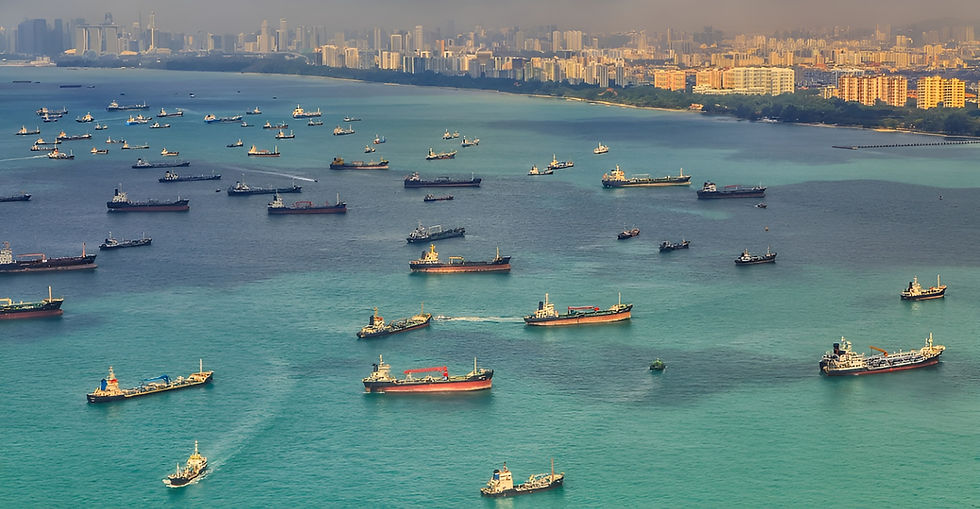Can Thailand’s Land Bridge Compete With Singapore? Not Yet
Aug 17, 2023

EXECUTIVE SUMMARY
Thailand plans a $28–36 billion land bridge linking the Gulf of Thailand and the Andaman Sea to bypass the Strait of Malacca. This key chokepoint carries 25% of global trade, nearly 90,000 vessels a year, and a quarter of all seaborne oil. The project would link to the Eastern Economic Corridor and speed Gulf of Thailand oil exports. Major hurdles include high costs, complex cargo handling, separatist tensions, and geopolitical risks. Chinese involvement could draw U.S. and regional pushback. Success could position Thailand as a rival to Singapore. Failure could leave an expensive, underused bypass.

Author:
John P. Causey IV
Can Thailand’s Land Bridge Compete With Singapore? Not Yet
In 2021, the Japanese-operated vessel Ever Given became lodged in the Suez Canal, blocking it for seven days and disrupting the narrow waterway that carries about 12% of global trade. The public received a crash course in shipping logistics and learned something many in the industry already knew: the world’s shipping lanes are congested, vulnerable, and becoming more so by the day.
The Eight Shipping Chokepoints
Global maritime trade is heavily concentrated at eight critical chokepoints. Two are man-made canals, and the others are natural straits or maritime passages. In 2019, global maritime cargo exceeded 12 billion tons, up from 8.4 billion in 2010, highlighting the growing strain on these vital passages. Congestion is also driven by slow infrastructure upgrades, natural environmental events such as the drought that nearly closed the Panama Canal in 2023, and geopolitical conflicts like the recent Red Sea attacks and tensions in the Strait of Hormuz.
These eight chokepoints are: the Panama Canal, Suez Canal, Bab el-Mandeb Strait, Strait of Hormuz, Turkish Straits (Bosporus/Dardanelles), Strait of Gibraltar, Strait of Malacca, and the Cape of Good Hope route around South Africa.

Thailand's Proposed Land Bridge
The Strait of Malacca, stretching 900 km between the Malay Peninsula and Sumatra and narrowing to just 2.8 km, is the world’s busiest shipping chokepoint. It links the Indian Ocean to the South China Sea and carries about 25% of global traded goods. Nearly 90,000 vessels transit it each year, and according to the U.S. Energy Information Administration, oil flows through the strait rose from 14.5 million barrels per day in 2011 to about 16 million by 2016, roughly a quarter of all seaborne oil. For China, around 80% of its seaborne oil imports pass through this narrow corridor, underscoring its strategic importance.

Thailand’s land bridge concept would bypass the congested Strait of Malacca by establishing two deep-sea ports and linking them with 90 kilometers (55 miles) of rail, road, and oil pipeline networks. Shippers using the land bridge could shorten shipping times by at least two days. Thai authorities estimate the project could boost GDP growth by one to two percentage points annually.
If Thailand can successfully execute the project, it has the potential to position itself as a global shipping hub on par with nearby Singapore. Vietnam is already pursuing a similar trajectory, having recently begun direct sea shipments to the United States, putting itself in direct competition with Dubai, Shanghai, Hong Kong, and Singapore. The land bridge could also link directly to Thailand’s advanced manufacturing base in the Eastern Economic Corridor and accelerate the development of oil fields in the Gulf of Thailand, enabling faster and more efficient crude exports while integrating with other completed and planned infrastructure projects.

Significant Challenges to Realizing Thailand's Land Bridge
The obstacles are substantial, including project cost, logistics complications for shippers, separatist movements, and unfavorable regional geopolitics.
Project Costs
Project costs are expected to reach $28 to $36 billion, a figure that will require extensive foreign participation and is large even by China’s Belt and Road Initiative standards. Most of the cost would go toward establishing the two deep-sea ports in Ranong and Chumphon and building the oil infrastructure needed to store and transfer shipments from the Andaman Sea and Gulf of Thailand.
Increased Coordination
Handling cargo via Thailand’s land bridge would require vessels to be unloaded on one coast and reloaded on the opposite, adding handling steps, logistics complexity, and potential bottlenecks. For comparison, at the Port of Singapore, container dwell time has surged to an average of 7.1 days, up from the typical 3 to 5 days. These delays compound quickly, with global transit times rising by roughly 30 percent and overall container journey durations increasing about 20 percent. If cargo handling inefficiencies occur at either end of the land bridge, they could quickly erase any potential time or cost savings over direct sea routes, leading many shippers to favor the longer but logistically simpler Singapore corridor.
Separatist Movement
In southern Thailand, where the land bridge would cross some of the country’s poorest and least developed areas, separatist sentiment runs high. Insurgent activity has persisted for decades, and any large-scale infrastructure project could face security risks that translate into construction delays, higher insurance premiums, and cost overruns. This is also one reason a canal option has been dismissed; physically cutting the country in two could complicate national defense and governance while giving separatist groups rhetorical and legal leverage.
U.S. & China Tug of War
Chinese involvement in the land bridge could trigger pushback from Washington and regional shipping rivals. Challenging established hubs like Singapore and Hong Kong is a high-stakes move, especially as U.S. naval protection of global shipping lanes recedes. Piracy incidents are already rising, with 120 reported cases in 2023, up from 115 in 2022. Without strong security guarantees, risks of sabotage and disruption along new routes would increase, threatening the land bridge’s reliability.
VANTAGE'S TAKE
While Thailand’s land bridge is unlikely to materialize in the near term, the concept underscores how geography shapes economic opportunity. Proximity to major shipping lanes is an advantage in global trade, particularly now when chokepoints are increasingly congested and alternatives scarce. But geography alone is not sufficient. Modern infrastructure must be funded, built, and maintained, and accompanied by political stability and operational efficiency. Singapore has demonstrated what is required and the benefits that accrue to the victors.









